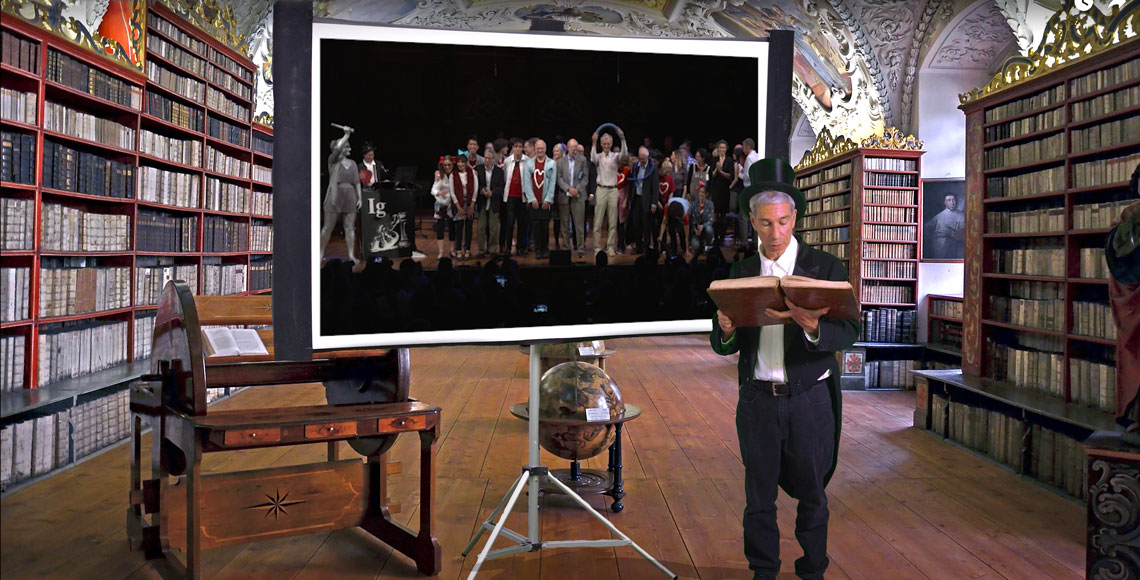Every year, the Nobel Prize is preceded by its satirical version, the Ig Nobel Prize, which held its 32nd edition in September. The fun ceremony, which has migrated to a remote format since 2020 as a consequence of the Covid-19 pandemic, included awards in the Biology category for Colombian Solimary García Hernández and Brazilian Glauco Machado, who was her supervisor at the University of São Paulo (USP). The work investigated the consequences of the capacity of scorpions of the genus Ananteris to lose the end of their tail when captured. As a joke, the award aims to highlight scientific research that makes you laugh, and then think.
What led to the selection, and what Machado classifies as “bizarre, extraordinary, and radical,” is that in the process of releasing their tail, scorpions lose part of their digestive system, including the anus, and spend the rest of their life unable to defecate—which causes an accumulation of waste in the abdominal cavity. This constipation can affect different aspects of their life, including reproduction and movement.
But three scientific articles have indicated that the strategy is worthwhile, and for this reason it is favored by natural selection. First, it allows the scorpion to survive, rather than becoming a meal, and it can reproduce afterwards, overcoming some obstacles: males need to make more effort to attract the attention of females, which they do through movements of the tail, and females produce fewer offspring, since they have less space for the gestation. They also have difficulty hunting large prey, due to the lack of a stinger that injects venom, but they are still able to move well and do not perform badly in experimental races.
Given prior warning about having been selected, García made a furry scorpion with a biologically correct appearance: thin claws, cylindrical stinger, light color, clearly-marked anus, and able to detach its tail (or autotomize) by means of a velcro joint. “It needed to have the features of Ananteris,” says Garcia, who had remote help from her mother, who is in Colombia, and a small sewing machine she bought for her current project. Her husband, artist John Uribe, helped transform Machado’s living room into a setting to receive the award. The biologist also edited the 1-minute-long video explaining the research to the nonspecialized audience, a requirement of the organization.
They received the award, between Zoom teleconference windows, from physicist Jerome Friedman, winner of the Nobel Prize in 1990 for fundamental discoveries into the understanding of quarks, and mathematician Marc Abrahams, editor of the magazine Annals of Improbable Research and master of ceremonies of the event. The award is a cylinder with printed themes from the prize, supposedly so that each researcher keeps all their knowledge in it, and a 10-trillion-Zimbabwe-dollar bill.

PublicityIn a setting prepared at USP, the pair receive the award and demonstrate the study with a stuffed scorpionPublicity
Between traditional jokes such as launching paper planes, miniaturized lectures in which researchers explain their subject matter in 24 seconds and then in seven words, and a fun mini-opera, Abrahams announces the winners, always based on a scientific article.
In the Applied Cardiology category, an international group revealed the synchronization of heart rhythms between people who, upon meeting, feel attracted to each other. This synchronization reveals more about the romantic potential than other parameters, such as heart rate and eye contact.
The prize for Literature dealt with the impenetrable nature of legal documents, compared to everyday reading material such as children’s books and comics, and common speech. The authors, from Canada, UK, USA, and Australia, argued that understandable texts could bring beneficial changes to society.
A Polish group won the award for Medicine for showing that eating ice cream can minimize the development of mucositis as a side effect of chemotherapy. The author explained that sucking ice also works, but the auxiliary treatment with ice cream has greater adhesion, and that it is evidence-based medicine.
A Japanese designer was selected in Engineering for calculating how many fingers people use to turn different size knobs, something useful for designing a range of devices.

PublicityMarc Abrahams hosted the online ceremony with some references about the history of face-to-face meetingsPublicity
The History of Art award was given to a multidisciplinary study that united researchers from Holland, Guatemala, Austria, and the USA, about the use of enemas—the administration of substances via the anus. The procedure is recorded on Mayan ceramics, showing details of its medicinal and ritual use.
In Physics, the award went to two groups: an article published in 2021 by researchers from the UK, China, and Turkey, and another from 1994, by an American. Although they do not completely agree among themselves on the physical details, the studies showed the benefit of ducklings swimming in a line behind the mother. The authors of the most recent work argued that the knowledge could be useful for boat design and fleet navigation strategies.
The Peace award was given to an international group that developed an algorithm that helps gossipers decide when to tell the truth and when to lie, based on the prediction of what the interlocutors are doing.
In Economics, Italians showed that luck is more important than talent for success, and a Swedish engineer was selected in the Safety Engineering category for developing a model for understanding how cars can avoid crashes with moose.
Over the next months, 10-minute lectures recorded by the winners with more detailed explanations will be released. A little worried, initially, with the possibility of being ridiculed for the award, Garcia and Machado highlight the interest of the chosen studies and the potential for dissemination based on the humorous coverage. “This is what I have imagined since I was a child, doing science out of curiosity,” she says.
Republish